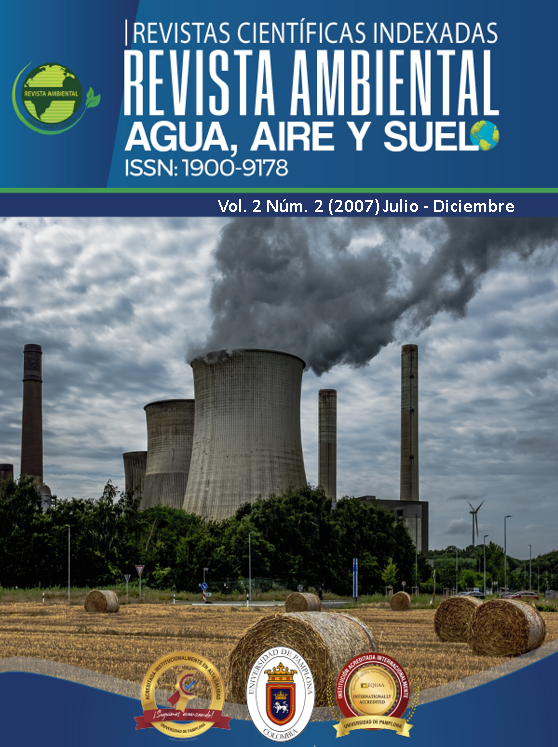Determination of kinetic and stoichiometric coefficients of the aerobic degradation process in biological wastewater treatment in batch reactors
DOI:
https://doi.org/10.24054/aaas.v2i2.2034Keywords:
SBR reactors, aerobic treatment, piston flow, biological clippings, wastewater treatmentAbstract
This research project developed an SBR-type activated sludge reactor, which was used to determine the reaction kinetics of biological wastewater treatment through the construction and commissioning of a batch activated sludge pilot reactor.
A sludge reactor operating under discontinuous SBR conditions was designed, where the reactor was loaded with wastewater and left to react for a defined period of time to obtain the optimal conditions
for wastewater treatment. It was then left to settle for a period of time and the supernatant was discharged through a purge system, to be reloaded and continue the treatment cycle; periodically, an amount
of excess sludge was evacuated to control the age of the sludge present in the system. The reactor was constructed in a rectangular tank made of glass with a total volume of 30 liters. Small compressors were used as aeration systems,
and a mechanism was constructed for agitation using a motor and axial impeller blades located parallel to the vertical axis of the agitator and the tank. Tests were carried out for 9 hours, and samples were collected
every hour and a half. These samples were analyzed for BOD5, SSV, SST, OD, and SS. With this information, two approaches were applied to find the kinetic coefficients that govern the process of degradation and biological growth and co
Every hour and a half, BOD5, SSV, SST, OD, and SS were determined for these samples. With this information, two approaches were applied to find the kinetic coefficients that govern the process of biological degradation and growth, and the sedimentation characteristics of the solids generated during the process were redetermined using the sedimentable solids.
Downloads
References
APHA, Standard Methods for the Examinationof W ater and W astewater. 19t edition. American Public Health Association, W ashington, D.C. 1995
CRITES Ron; TCHOBANOGLOUS George.Tratamiento de Aguas Residuales enPequeÒas Poblaciones. Editorial MC GRAW ñHILL INTERAMERICANA. 2000.
GIRALDO, Gloria InÈs. Manual de An·lisis deAguas. Universidad Nacional de Colombia sede Manizales. 2002
JARAMILLO OROZCO, ¡lvaro. Bioingeniería de aguas residuales. Teoría y Diseño. Editorial Escuela colombiana de Ingeniería. Acodal.2005.
METCALF, hedí. Ingeniería sanitaria, tratamiento, evacuación y reutilización de las aguas residuales. Colombia: Centenario.1994.
RAMALHO, Sette Rubens. Tratamiento de aguas residuales. Illiois: Reverts S.A. 1991.
ROMERO, Jairo A. Tratamiento de AguasResiduales, TeorÌa y Principios de DiseÒo.Editorial Escuela colombiana de IngenierÌa.2002.
Downloads
Published
Issue
Section
License
Copyright (c) 2022 REVISTA AMBIENTAL AGUA, AIRE Y SUELO

This work is licensed under a Creative Commons Attribution-NonCommercial 4.0 International License.










